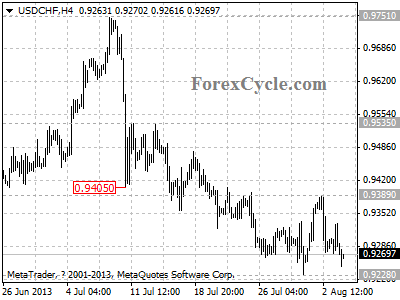By MoneyMorning.com.au
‘If China crashes, so will Australia.’
We’ll admit to singing that tune for much of the past five years.
But we started to change our tune on China about 18 months ago.
That was when even the mainstream media and analysts started to shift from bullish to bearish on China’s economy.
It was also when we started paying less attention to macro-economic events. We felt there was too much manipulation of global economies to make much sense of them.
We’ll leave that analysis to other, smarter folks than your editor. We prefer to focus on micro-economic analysis – stocks.
That has been important. Because despite the negativity on China, the Australian market has held up remarkably well.
So, does that mean Australia has now de-coupled from China?
OK, that’s probably taking things too far.
China is still Australia’s largest trading partner and the biggest consumer of Aussie natural resources. (If our old pal Nick Hubble is right, we’re not just talking about copper and iron ore, the biggest future export to China could be…milk!)
So there’s no doubt that what happens in China will have an impact on the Australian economy.
However, it’s important to separate the Australian economy from the Australian stock market. If you’ve learnt anything from the past five years it should be that what’s good or bad for the economy isn’t always good or bad for stocks…
Have Australian Stocks De-Coupled from China?
To show you what we mean, check out the chart below. Over the past year all the headlines have been about China’s lower growth rate and forecasts of the growth rate going lower.
At the same time, China’s stock market has been volatile, slipping into negative territory for the year – down 3.8% since this time last year. Actually, that’s not bad given the negativity.
But what about the Australian market? It should have taken a beating too right? Yes, resource stocks have fallen. But we can’t say the same for the rest of the market, as the chart shows:
 Source: Google Finance
Source: Google FinanceThe Australian blue-chip index, the S&P/ASX 200, is 20.9% higher compared to this time last year.
So how’s that possible when the Australian economy relies on China? Even though resources make up a big part of Australian exports, the big blue-chip index has a heavy weighting towards dividend stocks – especially the big banks. China doesn’t impact those stocks directly.
But more than that, the one-year chart of the Australian index is key. Last July and August was the start of the Aussie dividend rally. The Reserve Bank of Australia (RBA) had cut interest rates in May (0.5%) and June (0.25%). But investors didn’t start buying dividend stocks straight away.
The dividend rally only kicked off when investors saw the July 2012 RBA statement as a signal that interest rates would stay low.
Now, as the old saying goes, ‘past performance doesn’t guarantee future performance’. So can we expect more of the same – a continued ‘de-coupling’ between Aussie and Chinese stocks?
Dividend Rally Not Over by a Long Shot
The relative stock action between Australian stocks and the Chinese economy is a great example of how paying too much attention to news headlines can divert your gaze from the important stuff.
If you had thought a slow-growth China would naturally mean bad news for Australian stocks, it would have kept you out of the market. And that would have meant missing out on a 20% gain for your stock portfolio.
But all that is in the past. How will things play out over the next 12 months?
Quite frankly, we still don’t see that things have changed. Interest rates are low, and unless the RBA surprises the market this afternoon, there’s a good chance they’ll go even lower.
And as for the idea that interest rates are about to shoot up and send markets crashing…in the short term, we just don’t see that either (although we could be wrong).
Even in Japan, where the yield on government bonds doubled in just a few days, the Nikkei 225 index has regained almost all of the lost ground:
 Source: Google Finance
Source: Google FinanceThis shows you that for all the talk of rising interest rates harming the economy, investors still believe interest rates will stay relatively low. And importantly, they see stocks providing a better potential return than other assets.
And that’s the way we look at it. Even if Japanese government bonds are at 1% rather than 0.5%, it’s not a big enough jump to make them more attractive investments compared to stocks.
Look at the Australian market. Bank savings rates are around 4%. That’s not bad. But it’s not as good as a dividend-paying stock that offers growth and the potential for a 6% or 7% fully franked dividend yield (see here for wealth specialist Vern Gowdie’s simple explanation of how a simple share investment can force the government to help pay for your retirement).
This is why we didn’t fall for the claims about the end of the dividend rally. As far as we’re concerned the rally isn’t over by a long shot.
In fact, we’re still looking for opportunities to buy sound dividend paying stocks on any dip, which we could see today if the RBA doesn’t cut rates.
Cheers,
Kris+
Join Money Morning on Google+
From the Port Phillip Publishing Library
Special Report: The Sixth Revolution
Daily Reckoning: The Global Trend Towards Wealth Protection
Money Morning: Two Approaches to Investing…
Pursuit of Happiness: Learning to Avoid the Governments ‘Noble Wealth Trap’
Australian Small-Cap Investigator:
How to Make Big Money from Small-Cap Stocks









